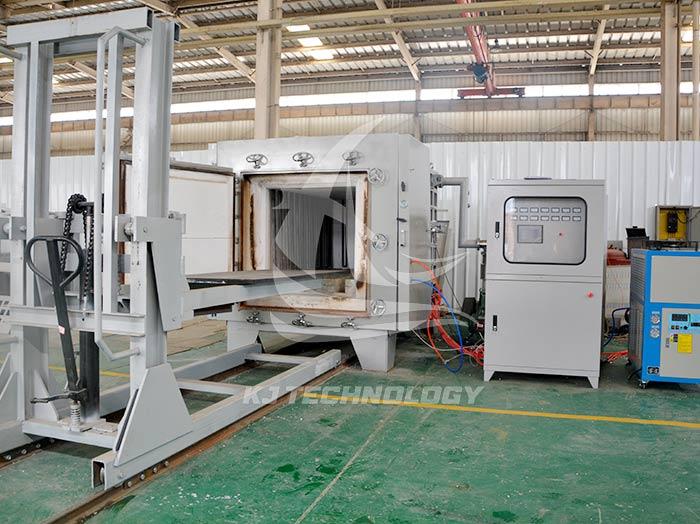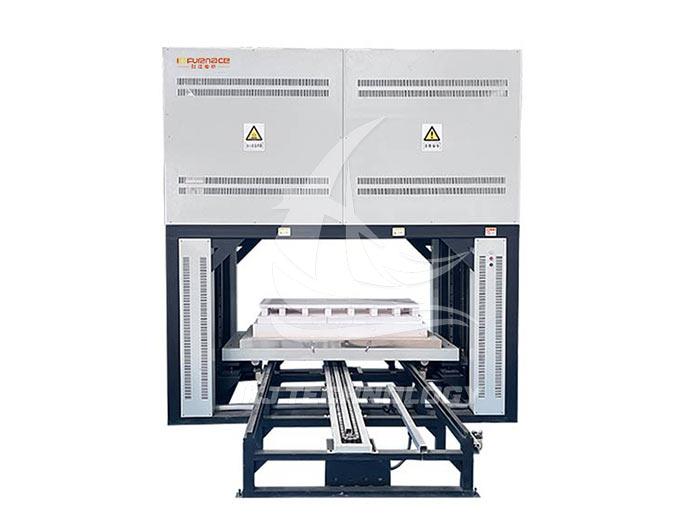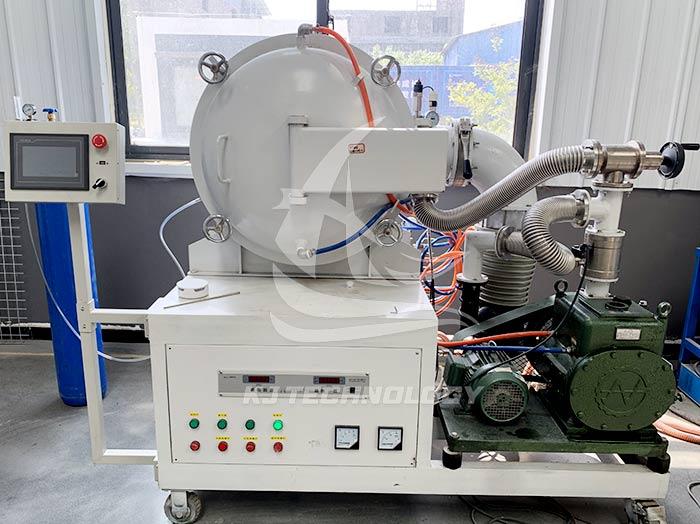Common faults of electric heating vacuum brazing furnace
 09-24-2025 Author: KJ technology
09-24-2025 Author: KJ technology
Common faults and troubleshooting methods of electric heating vacuum brazing furnace
1. The vacuum degree cannot meet the technical standards
Reason for malfunction:
Vacuum pump malfunction: such as low pumping efficiency, oil contamination, and shaft seal wear.
Aging or damage of sealing components: such as aging, damage or improper installation of the sealing ring between the furnace body and the flange.
Vacuum system leakage: such as inadequate valve sealing, loose pipeline connections, etc.
Vacuum gauge or gauge tube damage: such as resistance gauge tube, ionization gauge tube damage or failure.
Exclusion method:
Maintenance of vacuum pump: Check the oil quality, oil quantity, and wear of the shaft seal of the vacuum pump, and replace the vacuum pump oil or shaft seal if necessary.
Replace seals: Check and replace aging or damaged seals to ensure proper installation.
Leak detection and repair:
External leakage detection: Use flame method or acetone/ethanol spray method to detect the leakage point, repair it, and then vacuum it again.
Internal leakage detection: If there is suspicion of internal leakage (such as heat exchanger leakage), pressure leak detection or separate leak detection should be carried out.
Replace the vacuum gauge or gauge: If the vacuum gauge or gauge is damaged, it needs to be replaced with a new one and recalibrated.
2. Local high temperature in the heating chamber or slow/no heating of the workpiece
Reason for malfunction:
Heating element malfunction: such as loose, damaged or insufficient power of the heating element.
Temperature control instrument malfunction: such as incorrect parameter settings, instrument damage, or abnormal output signals.
Thermocouple malfunction: such as thermocouple wire breakage, damage, or incorrect installation position.
Power or electrical faults: such as magnetic voltage regulator failure, unstable power supply voltage, or phase loss.
Exclusion method:
Check the heating element:
Tighten loose heating elements to ensure good contact.
Check the resistance value of the heating element and replace the short circuited or open circuited heating element.
Ensure that the resistivity of the new heating element matches the voltage regulator.
Maintenance of temperature control instruments:
Check if the parameter settings are reasonable and adjust them if necessary.
Perform maintenance or replace new parts according to the instrument manual.
Replace thermocouple:
Check if the installation position of the thermocouple is correct and adjust it if necessary.
Replace broken or damaged thermocouples to ensure that the model, specifications, and quality meet the requirements.
Maintenance of power supply or electrical system:
Check if the wiring of the magnetic voltage regulator is loose and if the contacts are normal.
Use a voltage regulator to stabilize the power supply voltage and check for any phase loss issues in the electrical circuit.
3. Poor flow of cooling water or high temperature
Reason for malfunction:
Water pump malfunction: such as damaged water pump or inflexible operation.
Pipeline blockage: such as blockage inside the water tank, water pipe, or cooler.
Insufficient cooling water supply: such as low water pressure or insufficient flow rate.
Exclusion method:
Repair the water pump: Check the operation of the water pump and replace it with a new one if necessary.
Cleaning pipelines: Check whether the water tank, water pipes, and cooler are blocked, and promptly clean dirt or foreign objects.
Adjust the cooling water supply:
Ensure that the water pressure is between 0.1-0.15MPa and the temperature is not lower than 15 ℃ and not higher than 30 ℃.
Provide circulating water or rust proof water, avoid using hard water or water containing impurities.
4. The mechanical transmission part is not functioning properly
Reason for malfunction:
Motor or gearbox malfunction: such as motor damage, gearbox wear, or inflexible operation.
Poor lubrication of transmission components: such as chains, sprockets, bearing seats, and other components lack lubrication.
Limit switch malfunction: such as damage or improper adjustment of the limit switch.
Exclusion method:
Repair the motor or reducer: Check the operation of the motor and reducer, and replace them with new parts if necessary.
Add lubricating oil: Regularly lubricate the transmission components to ensure smooth operation.
Adjust limit switch: Check the installation position and working condition of the limit switch, and adjust or replace it if necessary.
5. Serious equipment leakage
Reason for malfunction:
Sealing surface leakage: Poor sealing of sealing surfaces such as furnace bodies, flanges, valves, etc.
Leakage at the connection of the vacuum pipeline: such as loose connections or damaged sealing rings at the pipeline connection.
Exclusion method:
Check the sealing surface: Check the sealing condition of each sealing surface and adjust or replace the sealing ring if necessary.
Repair pipeline connections: Check for air leaks at the vacuum pipeline connections and promptly repair or replace damaged components.








